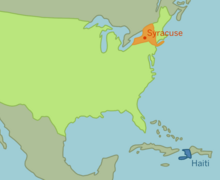Imperfections in ‘Wild Robot’ add to its emotional vigor
Emma Lee | Contributing Illustrator
Hand-drawn, vibrant animations pair with the dynamic story of DreamWorks Animation's new film, “The Wild Robot.” The movie, enhanced by the visual storytelling, is about a robot who learns of human connection.
Get the latest Syracuse news delivered right to your inbox.
Subscribe to our newsletter here.
Stranded in an unknown and frightening world where animals live in inharmonious discord with one another, task-oriented robot Roz (Lupita Nyong’o) is left searching for her purpose.
To find a way to help in this uncertain environment, she quietly observes the environment, attempting to learn about what’s around her. Her contemplation speaks to the film’s message on the human condition and the need for people to come together to find common ground.
“The Wild Robot,” DreamWorks’ latest feature, is a thought-provoking and poignant film deservedly amassing audience and critical acclaim.
Based on Peter Brown’s bestselling novel of the same name, the film is a tale full of heart, humanity and change. Raw, organic visuals complement the story and push the boundaries of animation, playing at the film’s oxymoronic title and the story’s dichotomy between the mechanical and the natural.
The story follows ROZZUM Unit 7134 (Lupita Nyong’o), referred to as “Roz,” a futuristic robot specifically designed to help humans with their tasks. But when Roz crash lands on an island inhabited solely by woodland creatures, she doesn’t know what to do. While she possesses a cheery demeanor at first, Roz soon discovers that in this harsh, unforgiving environment, she’s feared by the animals.
After accidentally stumbling onto a nest – killing a goose and almost all of its eggs – Roz becomes determined to care for the surviving gosling, Brightbill (Kit Connor).
Soon, she meets Fink (Pedro Pascal), a manipulative fox willing to deceive others in exchange for a meal and shelter. But after seeing the affection that Roz shows Brightbill, Fink slowly begins to open up as he realizes that he desires love and care from others.
Roz and Fink work together to prepare Brightbill for migration. As Roz nurtures Brightbill and Fink, her cold and robotic demeanor slowly evolves into a heartfelt, maternal figure. Together, the three create their own family of outcasts and eventually earn the trust of the other animals.
In the end, Roz evolves into more than she was made for, exploring a newfound sentience and a willingness to become one with the uncertainty of nature.
The film soars because of the clear directorial vision from Chris Sanders, who also directed hit movies “Lilo & Stitch” and “How to Train Your Dragon.” Sanders takes the film’s storyline, geared toward families and young children, and seamlessly weaves in themes of humor, darkness and compassion to create complex emotional layers fit for viewers of all ages.

Dakota Dorsey | Design Editor
Sanders’ directorial choices, in both screenplay and visual production, feel purposeful and add to the story’s depth and thematic elements through the constant use of set-ups and payoffs.
While the script feels fresh and pleasantly unpredictable, the story moves quickly between plot points – too fast for its own good. Sanders doesn’t give the audience time to breathe and take in the environment. Still, despite this nagging pacing issue and slow third act, the film can hang its hat on its strong emotional and thematic elements.
The vibrant visuals and stylistic choices of the film pair well with the dynamic story. There’s an indescribable warmth in the imperfections and rough animation. In an interview with IndieWire, Sanders said he and his team took a 2D, painterly approach for the animation process.
To make “The Wild Robot,” the DreamWorks team meshed the 3D environment with 2D techniques using hand-drawn brushstrokes to create illusory and impressionistic images. The animators transport the audience into the world of the film with luscious colors that feel organic to the setting.
The hand-drawn look also applies to the character design. When designing Roz, after going through several iterations, the animation team settled on a circular and rudimentary shape that resembled the novel’s original drawings. As Roz adapts to the environment and becomes more accepted by the animals, her mechanical frame reflects the change and begins to dent, rust and grow moss.
The film is also uplifted by all-star performances and a moving score that mirrors the film’s emotional vigor. The ensemble, which includes Catherine O’Hara and Stephanie Hsu, has a range that adds depth and brings the screenplay to life.
At its core, “The Wild Robot” is about co-existence and evolution. The titular wildness speaks to the power of what it means to be human, to realize our strength and power when we become more than we originally thought possible. Sanders draws on themes of love and parenthood to create an experience that brings audiences closer together.
Published on October 6, 2024 at 10:55 pm






